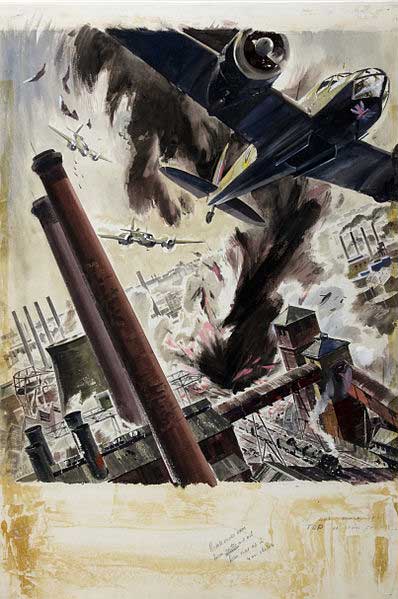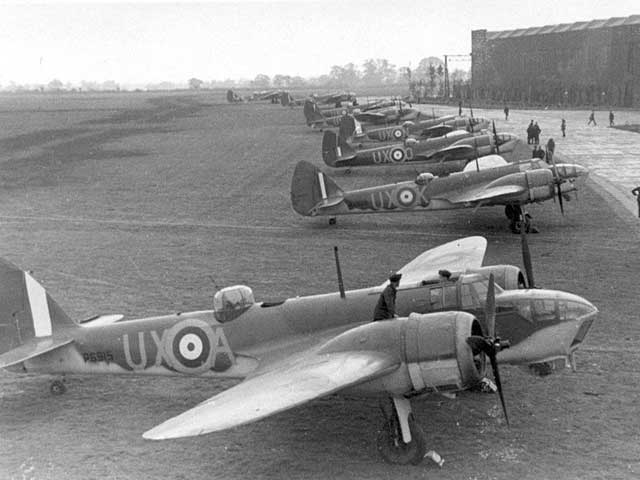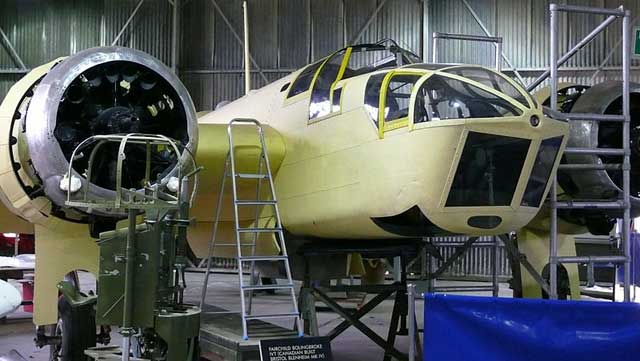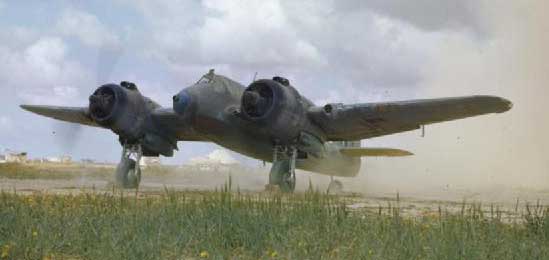Some aircraft in British hangers at the start of WW2 were light years ahead of their WW1 counterparts, but some odd design habits persisted even then. One case in point are the bomb bay doors on the Bristol Blenheim light bomber.

Blenheims over Germany by Artist James Garner
When WW2 began, aircraft that were designed in the mid thirties were the mainstay of both German and British Air Forces. Some designs were ahead of their time, but as far as bombers go, the Bristol Blenheim was one with a foot in the past. Although at the time the bomber was faster than any British Fighter ( The Hurricane was due out shortly after), it's 265 mph top speed was woefully inadequate in 1939, especially when the opposition had plenty of Bf 109 fighters that could almost touch 400 mph. The Blenheim's defensive armament was poor, with one forward firing .303 Browning in the wing, and one rear gunner with a Vickers K gun, also rifle caliber. The early Blenheims also had no bullet proof windscreens, and no self sealing gas tanks. They were especially vulnerable to German 20mm guns, which the Germans seemed to have plenty of.

Squadron of Blenheim IV's
But as far as being a bomber is concerned, the Blenheim could carry 1000 lbs for it's bomb load, but in a holdover from WW1, the bomb bay doors were held closed with bungee cords. One of the earliest uses of bungee cords was in the landing gear of primitive aircraft, to absorb shock. The bombs were released internally, then leaned against the doors, forcing the bungee cords to give way, releasing the bombs. The only thing that alerted the pilot to the bombs actually being away is the lift the aircraft got for being suddenly lighter. How long it took for the doors to actually open depended on the strength of the bungee cords, with pinpoint accuracy not even on the table. The bombs will go out when they go out and that's that.

Blenheim being restored, picture by Wikimedia contributor Ad Meskins
The Blenheim at first was murdered over Germany in 1939, sometimes with plane losses at 100%. But since you fight wars with what you have when they start, the Blenheim soldiered on, and actually got better with age, at first being upgunned in an ad hoc fashion by ground crews in the field, and later at the factory. They were finally armored and fitted with self sealing fuel tanks, and served well, but as far as the bungee cords go, crews in the middle east just threw away the bomb bay doors completely, taking the loss in airspeed for a chance to put a bomb where they wanted too. They were pulled from service in 1943, with the availability of more modern fighter bombers, such as the Beaufighter, which incidentally, was based on the Blenheim.

The successor to the Blenheim, the Bristol Beaufighter

